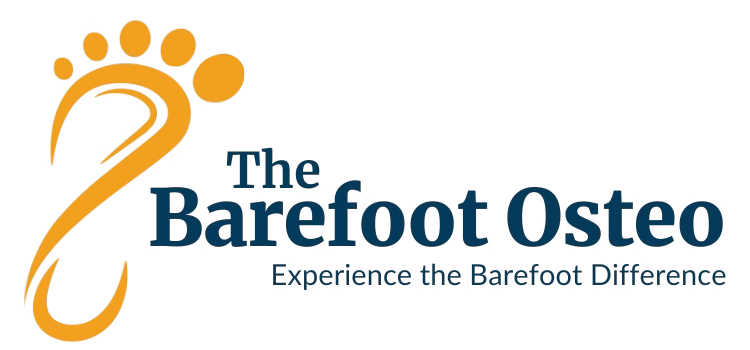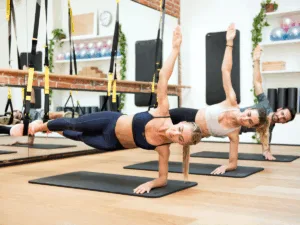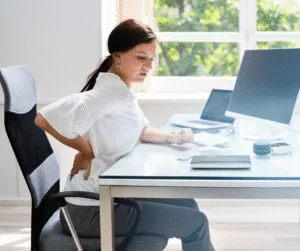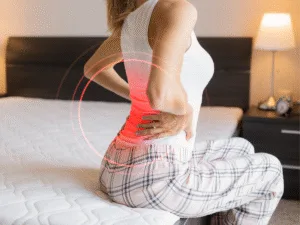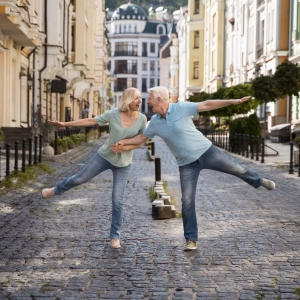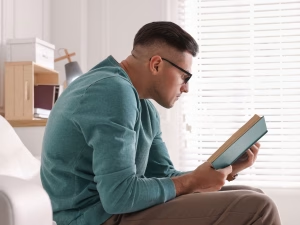If you’re struggling with hip tightness and back pain in Warrnambool, you’re not alone. Every week, we see people dealing with chronic lower back aches and stiffness—no matter how much they stretch, rest, or “push through.”
Did you know that tight hips and poor posture are two of the most common, overlooked reasons for ongoing back pain? Research—including new findings from leading back pain experts like Prof. Stuart McGill—shows that when your hips lose mobility or your posture slips, your lower back is forced to do more work. Over time, this overload can set you up for persistent pain and recurring flare-ups.
At The Barefoot Osteo Warrnambool, we see this pattern daily: hip tightness, tired postural muscles, and backs that just aren’t getting the support they need. The good news? Small changes in how you move can make a big difference in how your back feels—at work, at home, or out on the coast.
📌 KEY TAKEAWAYS:
- Tight hips force your lower back to compensate, making it more vulnerable to pain
- Poor posture—especially from sitting—adds extra strain and stress on your spine.
- Improving hip mobility and posture is one of the simplest ways to relieve and prevent back pain.
- Even a few targeted changes in your daily routine can support your spine and reduce flare-ups.
Why Hip Mobility Matters for Spinal Health
Tight hips are one of the most common—and most overlooked—contributors to ongoing lower back pain. When your hips can’t move freely, your lower back is forced to do extra work with every step, bend, or twist. Over time, this overload can create strain, irritation, and even lasting injury.
KEY POINTS
- Your hips are built for mobility; your lower back is built for stability.
- When hip movement is restricted, your spine picks up the slack, increasing your risk for pain.
- Professor Stuart McGill’s research confirms: loss of just 10 degrees of hip extension can dramatically increase lumbar stress and compensation.
- Daily habits like sitting, cycling, or repetitive lifting often lead to tight hip flexors, making the lower back work harder than it should.
When hips become stiff—especially from lots of sitting or poor movement habits—the natural flow of energy and motion through your pelvis and spine gets disrupted. Instead of the hips “absorbing” force, your lumbar spine bends, twists, or extends more than it’s designed to, leading to breakdown and pain.

Everyday Example:
Think about picking something up from the floor. If your hips are tight and can’t flex properly, you’ll bend from your lower back instead—placing all that load directly on your lumbar discs and joints.
📌 KEY TAKEAWAY:
Restoring hip mobility gives your spine a break. When your hips move well, your lower back can focus on what it does best—keeping you stable, pain-free, and strong.
Biomechanical Connections: The Ripple Effect of Poor Posture
Poor posture is more than just a “bad habit”—it’s a biomechanical stressor that can set off a chain reaction throughout your whole body. When you slump at your desk, crane over your phone, or stand unevenly, your spine and hips start to compensate for the imbalance. Over time, these small adjustments add up, often becoming a major source of chronic lower back pain.
KEY POINTS
- Slouching or prolonged sitting increases pressure on your lumbar discs and passive structures.
- Poor posture changes how your core muscles fire, often turning “support” muscles off and overworking the wrong ones.
- McGill’s research shows that sustained “flexion” postures (like sitting rounded over) increase the risk of disc injury and pain.
- Habitual poor posture leads to movement compensations: the hips, pelvis, and even upper back may all chip in, forcing your lower back to work overtime.
Everyday activities—sitting at your computer, driving, even relaxing on the couch—can reinforce these patterns. You might not notice right away, but over weeks, months, or years, your spine starts to lose its natural alignment and movement efficiency.
Everyday Example:
Picture yourself hunching forward on a laptop for hours. Your head shifts forward, shoulders round, and your low back flattens or slumps. The muscles designed to support you “switch off,” and your spine relies on its passive structures (discs, ligaments) to hold you up—inviting fatigue and injury.

📌 KEY TAKEAWAY:
Posture isn’t just about how you look—it’s about how efficiently your body handles load and movement. Small, daily habits have a big impact on your lower back health over time.
How to Know if Your Hips Are Tight (Self-Tests & Signs)
You don’t have to be a physio or osteopath to spot tight hips. Simple self-checks at home can reveal a lot about your mobility—and whether your hips might be making your back work overtime.
KEY POINTS
- Tight hips are often “silent”—you might not feel hip pain, but your back will do the complaining.
- Restricted hip mobility can show up as stiffness, difficulty squatting, or trouble sitting cross-legged.
- Professor McGill emphasizes: poor hip motion is a leading risk factor for lumbar overload, especially during everyday movements like bending, lifting, or standing up from a chair.
- A few simple tests can quickly show you where your mobility stands—and what to focus on next.

Everyday Example:
Have you noticed it’s tough to get down into a squat, or that you round your lower back when tying your shoes? If you struggle to sit on the floor with legs crossed, or your knees pop up during stretches, chances are your hips are limiting your movement—even if your back feels like the main problem.
Self-Checks for Hip Mobility
Try these at home to get a feel for your own mobility:
Deep Bodyweight Squat:
Stand with feet hip-width apart.
Can you squat down (hips below knees) while keeping your heels on the ground and your back upright?
If your heels lift, you tip forward, or your back rounds—it may signal tight hips or ankles.

Knee-to-Chest Test:
Lying on your back, pull one knee toward your chest.
Can your thigh reach your chest without your opposite hip lifting off the floor?
Difficulty or a pinch in the front of the hip? You may have tight hip flexors.

90/90 Hip Rotation:
Sit with one leg in front, bent at 90°, and the other leg behind, also bent at 90°.
Can you sit upright without tipping or straining?
Struggling to sit tall? Hip rotation may be restricted.
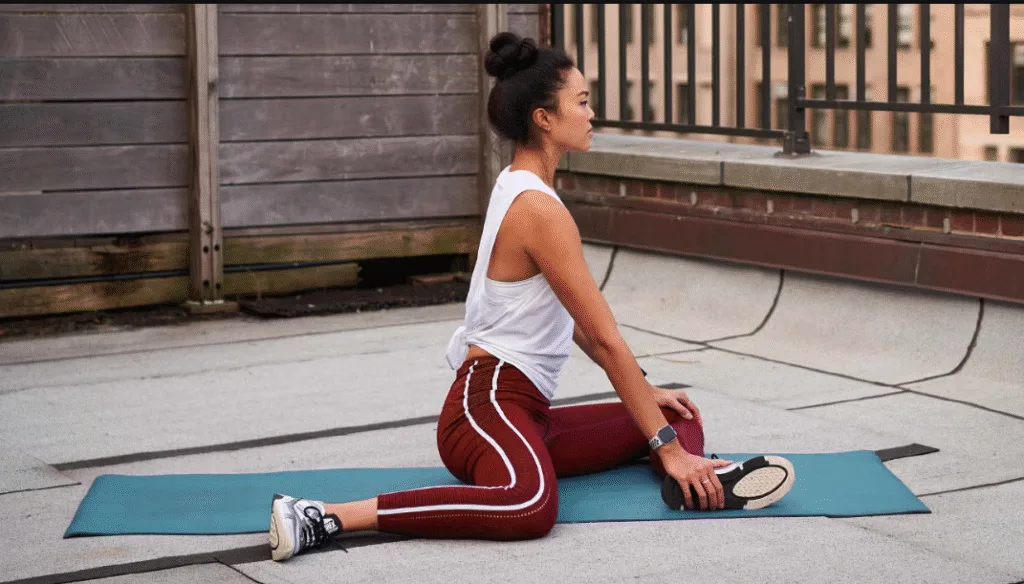
If any of these moves feel stiff or “stuck,” it’s a good sign your hips could use some extra attention—and your lower back will thank you for it.
📌 KEY TAKEAWAY:
Simple at-home tests can help you spot tight hips—before your back starts to pay the price. Improving hip mobility makes almost every movement safer and easier for your spine.
How Osteopaths Help with Hip & Postural Dysfunction
If you’ve noticed stiff hips, poor posture, or stubborn lower back pain, an osteopath can help you break the cycle and get your body moving better—often by working on much more than just your back.
📌 KEY POINTS:
- Osteopaths assess the whole body—not just the painful area—to find the real source of movement restrictions.
- We use hands-on techniques and guided movement to restore hip mobility, rebalance posture, and reduce compensation patterns.
- Improving hip mobilityEducation and home exercises are a core part of every treatment—helping you maintain progress between sessions.and posture is one of the simplest ways to relieve and prevent back pain.
- Even a few targetedYour care plan will always be unique, reflecting your lifestyle, goals, and how your body moves—not a generic protocol.changes in your daily routine can support your spine and reduce flare-ups.

Everyday Example:
Maybe you spend all day at a desk, or juggle work and family on your feet. An osteopath will look at how you stand, walk, squat, and move in daily life—then tailor care to address hidden stiffness or habits that might be sabotaging your back.
What to Expect from an Osteopathic Assessment
- Postural and Movement Screening:
- Checks for imbalances or restrictions in your hips, spine, and whole body.
- Manual Therapy:
- Gentle, targeted techniques to release tension and improve joint motion—especially around the hips and pelvis.
- Movement Education:
- Learn safer ways to bend, lift, and sit—plus how to activate the right muscles for support.
- Home Exercises:
- Simple, effective routines to keep your hips moving and your posture on track between visits.
Tip: The goal isn’t just to relieve pain—it’s to empower you with the tools and confidence to keep your back healthy for the long run.
For a deeper look at our full approach, explore our
Chronic Lower Back Pain cornerstone blog for details on holistic osteopathic assessment and care.
📌 KEY TAKEAWAY:
Osteopaths help you move beyond symptom relief by restoring hip mobility, optimizing posture, and teaching you simple habits that support a strong, pain-free back.
Practical Tips: Improve Hip Mobility and Fix Your Posture
You don’t have to overhaul your routine to start feeling better—just a few focused changes can make a huge difference. The key is to combine gentle hip mobility work with small posture adjustments throughout your day.
KEY POINTS
- Targeted exercises boost hip mobility and take pressure off your lower back.
- Ergonomic tweaks to your desk, car, or daily habits can prevent pain from returning.
- Consistency is more important than intensity—small changes done daily work best.
- “Barefoot” principles: feel the ground, move naturally, and pay attention to your body’s feedback.
Try These Exercises for Hip Mobility
- 90/90 Hip Rotations:
- Sit on the floor with one leg in front, one behind (both at 90°). Rotate gently side-to-side, keeping your chest tall.
- Aim: Open tight hips and improve internal/external rotation.
- Glute Bridge:
- Lie on your back, knees bent, feet flat. Lift your hips while keeping your core engaged and glutes active.
- Aim: Strengthen glutes, which offload your lower back.
- Hip Flexor Stretch:
- Kneel with one foot forward, shift weight forward until you feel a stretch in the front of your hip. Keep pelvis tucked.
- Aim: Lengthen hip flexors often shortened by sitting.
Simple Posture Hacks
- Desk setup:
- Keep your feet flat, knees at 90°, and screen at eye level.
- Set a reminder to stand up and move every 30–45 minutes.
- Movement breaks:
- Walk, stretch, or squat for 1–2 minutes every hour—especially on busy or stressful days.
- Mind your standing posture:
- Even weight through both feet, gentle bend in knees, and ribs stacked over hips.
- Try barefoot standing at home for extra proprioception and stability.
Tip: Track how your body feels after a week of small changes. Most people notice less stiffness and more freedom in their hips and back.
Find more tailored routines and daily strategies in our Chronic Lower Back Pain cornerstone blog
📌 KEY TAKEAWAY:
Gentle hip mobility drills + better posture = a powerful combo for lasting back relief. Start with just 5 minutes a day, and your spine will thank you.
FAQs: Hip Mobility, Posture & Back Pain
A: Yes—tight hips can silently overload your lower back, especially during bending and lifting. Your back “picks up the slack,” which often leads to pain over time.
For more on hip–spine connection, see Osteopathy for Hip Pain: A Holistic Approach to Lasting Relief.
A: Signs include trouble with deep squats, stiffness sitting cross-legged, or arching your back during simple movements. Try our self-assessment tips in this blog, and learn more about mobility in The Importance of Mobility for Long-Term Health.
A: Absolutely. Poor posture increases load on both your hips and lower back, but simple ergonomic tweaks can make a huge difference.
Check out Postural Strain in Warrnambool: How Osteopathy Can Help You Stay Comfortable at Work for posture solutions.
A: Focus on hip flexor stretches, 90/90 hip rotations, and glute bridges. The right moves target both mobility and core strength.
Find step-by-step routines in Chronic Lower Back Pain: An Osteopathic Perspective on Long-Term Relief and The Importance of Stability: A Foundation for Movement and Health.
A: If you have pain that lasts more than a few weeks, limits daily life, or just keeps returning, it’s smart to get assessed. Early support means faster relief and fewer setbacks.
Discover our full approach in Conditions Treated by an Osteopath | The Barefoot Osteo Warrnambool.
📌 KEY TAKEAWAYS:
- Tight hips force your lower back to compensate, often leading to pain and stiffness.
- Poor posture—especially during sitting—adds strain to your spine and core muscles.
- Simple self-tests (like deep squats or 90/90 hip rotations) can reveal hidden hip restrictions.
- Improving hip mobility and posture reduces back pain risk and supports healthy movement.
- Osteopaths address the whole body, helping restore balance with hands-on care and practical advice.
- Consistent, small changes—like daily stretches and posture tweaks—make the biggest difference over time.
Thank you for taking the time to explore how tight hips and everyday posture habits can quietly drive lower back pain. If you’ve ever wondered why back pain keeps returning—even after stretching, resting, or “pushing through”—you’re not alone. Many people in Warrnambool share the same frustration, not realizing that the little things they do each day could be making all the difference.
As we’ve uncovered, your hips and spine are a team: when your hips stiffen up, your lower back works overtime to pick up the slack. Poor posture—especially at your desk, in the car, or when relaxing at home—adds to the strain. But here’s the hopeful truth: You don’t need to overhaul your life to protect your back. Small, targeted changes in how you move, stand, and stretch can add up to real, lasting relief.
Picture this:
It’s the end of a long week. Instead of collapsing onto the couch, you stand up, stretch, and realize—you’re not dreading that familiar ache in your back. You move to pick something off the floor with ease, feeling strong and steady through your hips and spine. That’s the power of giving your body the freedom it craves, one simple habit at a time.
If you remember nothing else, remember this:
The little things—like freeing up your hips, paying attention to posture, and moving with purpose—are what protect your back for the long run. Back pain doesn’t have to be your “normal.”
Want to take the next step?
Download our Ergonomic Checklist, or book an assessment to discover how even small changes can help you move and feel your best.
Get Simple Tips to Protect Your Lower Back
Grab your free guide and learn easy ways to fix your setup, move smarter, and feel better every day.
Thank you!
Your download is ready — just click the link below to grab your ebook.
References
- Kendall, F. P., McCreary, E. K., Provance, P. G., Rodgers, M. M., & Romani, W. A. (2005). Muscles: Testing and Function, with Posture and Pain (5th ed.). Lippincott Williams & Wilkins.
- Liebenson, C., Karpowicz, A. M., Brown, S. H. M., Howarth, S. J., & McGill, S. M. (2009). The active straight leg raise test and lumbar spine stability. PM&R, 1(6), 530–535.
- McGill, S. M. (2016). Low Back Disorders: Evidence-Based Prevention and Rehabilitation (3rd ed.). Human Kinetics.
- Sahrmann, S., Azevedo, D. C., & Dillen, L. V. (2017). Diagnosis and treatment of movement system impairment syndromes. Brazilian journal of physical therapy, 21(6), 391–399.
- van Dijk, G. M., Dekker, J., Veenhof, C., van den Ende, C. H., & Carpa Study Group (2006). Course of functional status and pain in osteoarthritis of the hip or knee: a systematic review of the literature. Arthritis and rheumatism, 55(5), 779–785.
